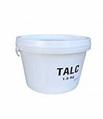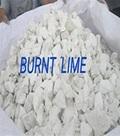- europages
- >
- Carboxylic and anhydric acids
- >
- JADAM
- >
- Titanium dioxide
Titanium dioxide
Titanium dioxide
Description
Titanium dioxide, (TiO2), also known as titanium(IV) oxide or titania is a white, opaque, naturally occurring mineral existing in a number of crystalline forms, the most important of which are rutile and anatase. These naturally occurring oxide forms can be mined and serve as a source for commercial titanium Titanium dioxide is odourless and absorbent, mineral forms can appear black Because of its bright whiteness, it is used in products such as paints, coatings, papers, inks, toothpaste, cosmetics, glass, ceramics and food coloring Properties: CAS number,13463-67-7 Melting / freezing point Anataz: 1560°C, Rutyl: 1843°C, Brukit: 1825°C Boiling point range 3000°C Relative density Anataz: 3,9 kg/l (20°C), Brukit: 4,17 kg/l (20°C), Rutyl: 4,26 kg/l (20°C) Solubility in water 1μg/l Chemical formula TiO2 Appearance White solid Odor Odorless Molar mass 79.866 g/mol Density: 4.23 g/cm3 (rutile) 3.78 g/cm3 (anatase)
- Carboxylic and anhydric acids
- Paints, coatings, ceramic
- Titania, Rutile R, Anatase A
- pigments
Similar products from JADAM

JADAM
Portugal
Hydrogen peroxide 30%,50% ,60% Hydrogen Peroxide (H₂O₂) is a colorless liquid with a slightly sharp odor it is used as a bleach for textiles and paper, as a component of rocket fuels, and for producing foam rubber and organic chemicals, it is also used in medicinal applications and to bleach clothes and hair. Industries: Household chemicals, Fertilizers, Cosmetic industry, Horticulture, Pharmaceutical industry, Food industry Uses: Bleaching,Production of organic peroxy compounds,Production of inorganic peroxides Sewage treatment,Disinfectant,Propellant Properties: CAS number 7722-84-1 WE number 231-765-0 Chemical formula H2O2 Molar mass 34,01 g/mol Customs tariff code 28470000 ADR UN2014 pH 1,5 – 4 Melting / freezing point - 33°C (35%), -51°C (50%), -56°C (60%) Boiling point 108°C (35%), 114°C (50%), 119°c (60%) Relative density 1,07 g/cm3 (35%), 1,195 (50%), 1,241 (60%)
Request for a quote
JADAM
Portugal
Formaldehyde is a colorless, strong-smelling, flammable organic chemical with chemical formula CH2O it is produced industrially and used in building materials such as particleboard, plywood, and other pressed-wood products also it is used as a fungicide, germicide, and disinfectant, and as a preservative in mortuaries and medical laboratories It is produced naturally during the decay of plant material in the soil and during normal chemical processes in most living organisms, it is also a combustion product found in tobacco smoke. Industries: Household chemicals, fertilizers, adhesives, oils, greases, horticulture, feed industry, plastic industry, resins and textile industry Properties: CAS number 50-00-0 (36-50%) WE number 200-001-8 (36-50%) Index number 605-001-00-5 (35-50%) Chemical formula CH2O Customs tariff code 29121100 ADR UN2209 pH 3-4 Melting / freezing point ~100°C Boiling point / range 64–85°C Relative density 1,090–1,150 g/cm3 @20°C
Request for a quote
JADAM
Portugal
Talc is a naturally occurring mineral, mined from the earth, composed of magnesium, silicon, oxygen, and hydrogen. Chemically, talc is a hydrous magnesium silicate with a chemical formula of Mg3Si4O10(OH)2 Talc has many uses in cosmetics and other personal care products, it may be used to absorb moisture, to prevent caking, to make facial makeup opaque, or to improve the feel of a product Industries: Paints and varnishes, Household chemicals, Cosmetic industry, Adhesives, oils, greases, Pharmaceutical industry, Building chemistry, Resins, plastics, polyurethanes Talc is used in many industries, including paper making, plastic, paint and coatings, rubber, food, electric cable, pharmaceuticals, cosmetics, and ceramics Properties: CAS number 14807-96-6 WE number 238-877-9 Chemical formula 3Mg2∙4SiO2∙H2O Molar mass 379,34 g/mol Customs tariff code 25262000
Request for a quote
JADAM
Portugal
Burnt lime Calcium oxide (CaO), commonly known as quicklime or burnt lime, It is a white, caustic, alkaline, crystalline solid at room temperature Calcium oxide that survives processing without reacting in building products, such as cement, is called free lime Industries: Glass and ceramics production of glass, calcium aluminate cement, and organic chemicals production of aerated concrete such as blocks with densities of ca. the major use of quicklime is in the basic oxygen steelmaking (BOS) process the quicklime neutralizes the acidic oxides, SiO2, Al2O3, and Fe2O3, to produce a basic molten slag Properties: CAS number 1305-78-8 WE number 215-138-9 Chemical formula CaO Molar mass 56,08 g/mol Customs tariff code 28259019 pH 12,3
Request for a quote